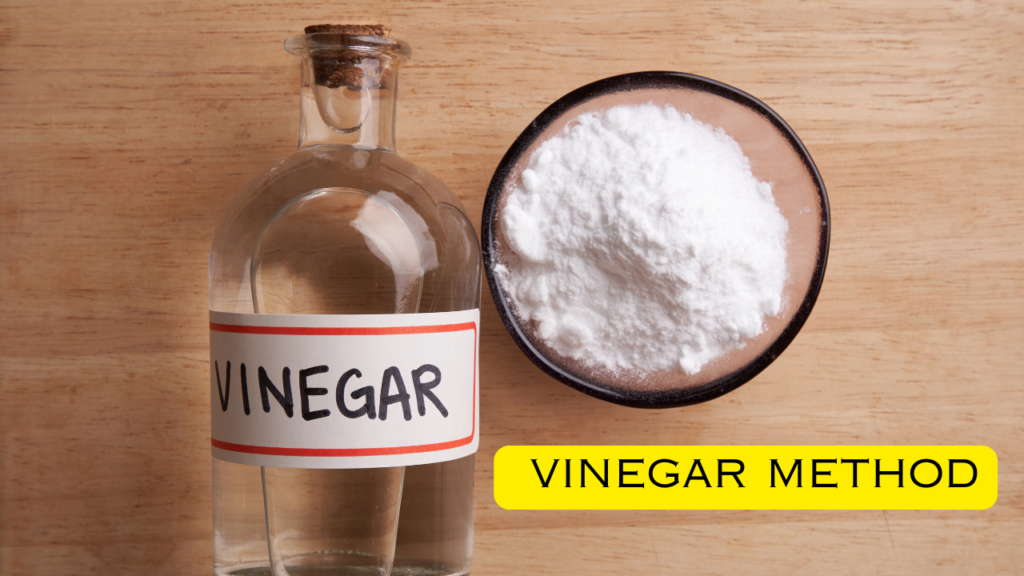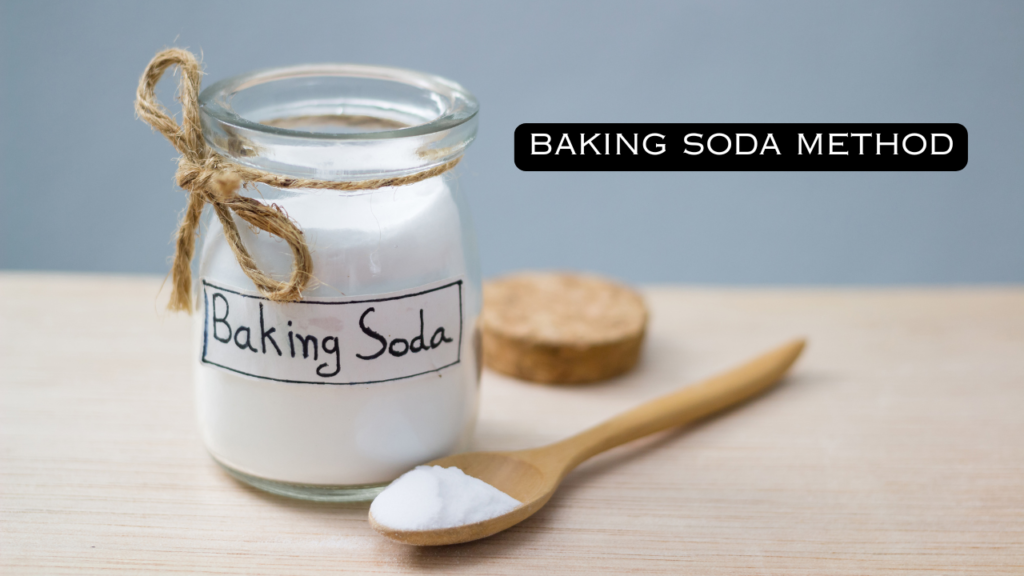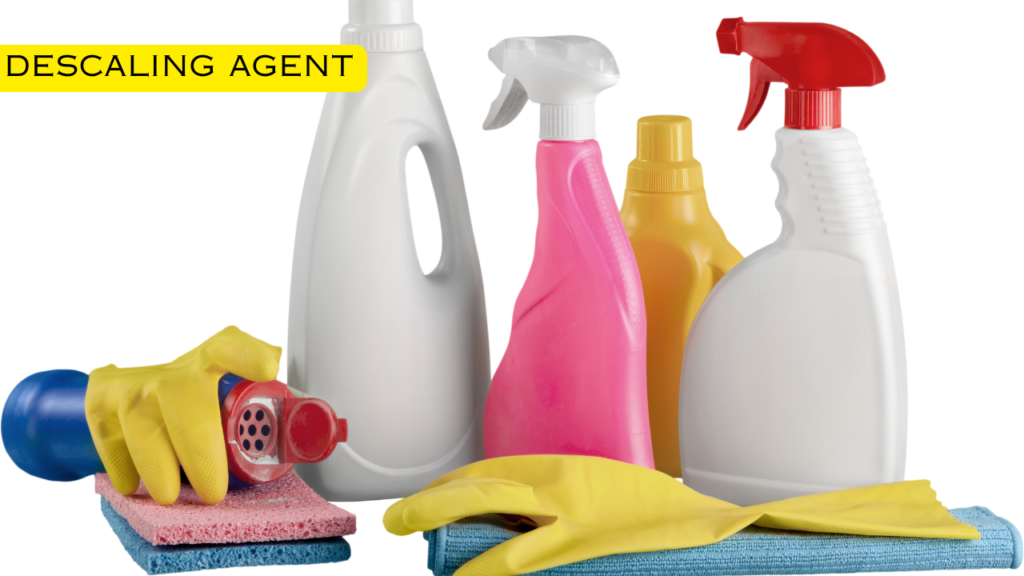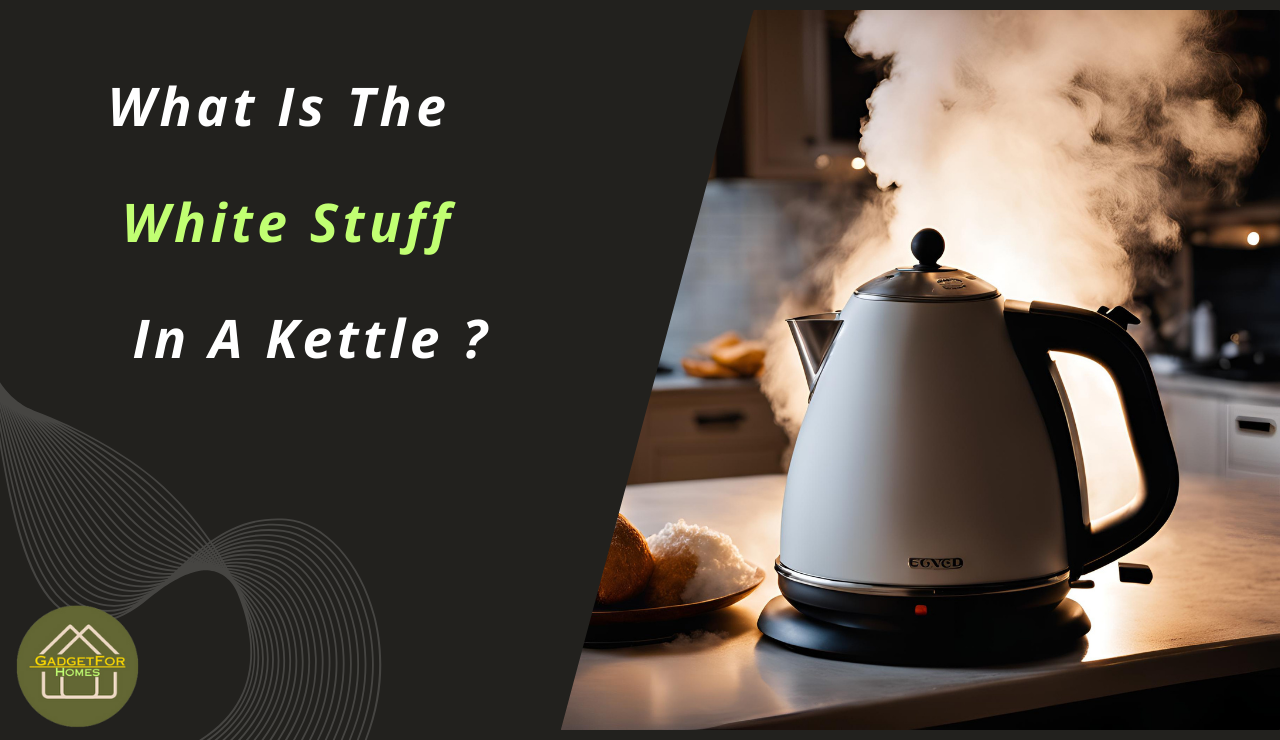Have you seen the white, powdery formation within your kettle? It’s not dirt—it’s limescale, and it’s something most of us have dealt with at some point.But what is it, and why does it occur? If you’ve been wondering whether it’s harmful or how to get rid of it, you’re not alone.
In this post, we’ll break down what limescale is, why it appears, and how to keep your kettle in top shape without any hassle.Let us explore into it and solve this common kitchen questions once and for all!
Table of Contents
What Is the White Stuff in the kettle ?

Ever noticed that white stuff in the kettle? That’s called limescale, and it comes from the minerals in hard water. Let’s break it down simply.
Defining Limescale
Limescale is mostly made of calcium carbonate (CaCO₃). When water with calcium and magnesium heats up, these minerals react with carbonate ions and form solid deposits.
The Chemical Equation:
Ca2++CO32−→CaCO3(s) + (CO}_3^{2-} → {CaCO}_3 (s)Ca2++CO32−→CaCO3(s)
Basically, hot water causes these minerals to stick together and settle at the bottom of your kettle.
Why Is It White?
Calcium carbonate is naturally white and insoluble, giving limescale its powdery, chalk-like look.
Other Minerals Involved
- Magnesium Carbonate (MgCO₃): Similar to calcium carbonate but less soluble, it also adds to the buildup.
- Iron: Sometimes, iron from pipes mixes with limescale, leaving reddish or brown stains.
How Does It Form?
When water boils, it evaporates, leaving behind dissolved minerals. In hard water, these minerals don’t stay dissolved at high temperatures and start forming solid limescale, especially on hot surfaces like the kettle’s heating element.
Factors Affecting Build-up:
- Water temperature
- Mineral concentration
- Water pressure
The Structure of Limescale
Under the microscope, limescale appears rough and harsh. It is also permeable, which means that bacteria can accumulate if not cleaned on a regular basis. Over time, these layers might thicken to the point that they block heating components or pipes in appliances.
So, the next time you see that white stuff in your kettle, you’ll know it’s just minerals hanging out—and it might be time for a clean-up!
↘️↘️↘️
If you don't know how to use a kettle then check my this blog👉👉👉How to use an electric kettle for the first time ?Why Does It Happen?
Ever wondered why the white stuff in your kettle keeps showing up no matter how much you clean it? It’s all about hard water and the minerals in it. Let’s make it simple.
Hard Water Chemistry

Water becomes hard when it absorbs minerals like calcium and magnesium from rocks such as limestone and chalk as it flows through them.
Water Hardness Levels:
- Soft Water: 0–60 ppm
- Moderately Hard Water: 61–120 ppm
- Hard Water: 121–180 ppm
- Very Hard Water: 180+ ppm
If you live in an area with very hard water, there’s a lot of calcium and magnesium in your water. When you boil it, these minerals are left behind in your kettle as the white stuff.
↘️↘️↘️↘️
If you don't know an electric kettle completely purify water or not then check this blog👇👇👇 Can an electric kettle purify water?Does Geography Matter?
Absolutely! Some areas naturally have hard water because of the local rocks. For example:
- Hard Water Regions: The UK, parts of the US (like the Midwest), Australia, and India.
- Soft Water Regions: Areas with granite rocks.
Sometimes, water treatment plants soften water using chemicals like sodium carbonate. But in many places, the water remains hard even after treatment.
Why Does Boiling Make It Worse?
When water heats up, minerals like calcium and magnesium become less soluble and start forming solid deposits. The hottest surfaces—like the kettle’s heating element—are where these deposits settle first.
Also, small impurities in the water, such as dust, act like very small magnets (called nucleation sites) that attract mineral crystals. This speeds up the build-up of the white stuff, especially in older kettles with broken surfaces.
So, the next time you see the white stuff in your kettle, you’ll know it’s just science doing its thing!
Is It Harmful?
Health Concerns:
You might have noticed that white stuff in your kettle and wondered if it’s harmful. Don’t worry! The white stuff is mostly calcium and magnesium from hard water, and both are actually good for our health in small amounts.
Some studies even suggest that drinking hard water can help strengthen bones and reduce the risk of osteoporosis.
But what about other contaminants? Some people fear heavy metals might sneak in through limescale. Research says otherwise—these contaminants mostly stay dissolved in water and don’t stick to limescale in a harmful way.
The real concern is bacteria or mold. If your kettle isn’t cleaned regularly and water sits inside for too long, bacteria can grow in those thick white deposits. So, keeping it clean is key!
Impact on Appliances:
Limescale isn’t just about health—it affects our appliances too. A thick layer of scale on the heating element makes your kettle work harder, using more energy and taking longer to boil water. Over time, it might even damage the heating element.
Plus, limescale can cause cracks and corrosion in metal parts, reducing your kettle’s lifespan.
Taste and Water Quality:
Ever noticed a weird taste in your tea or coffee? Limescale might be the culprit! It can make drinks taste dull or flat, especially if there’s a heavy buildup. Clear kettles also start looking cloudy and unappealing when limescale takes over.
How to Remove Limescale from Your Kettle?

If you’ve noticed that white stuff in your kettle, don’t worry—it’s just limescale. While it’s not harmful in small amounts, it can mess with the taste of your tea or coffee and even damage your kettle over time.
The good news? Cleaning it is super easy, and you can do it with things you probably already have in your kitchen. Let’s break it down step by step.
1. Vinegar Method:

Vinegar is one of the best ways to get rid of limescale. Here’s how:
- Fill the kettle with a mixture of white vinegar and water.
- Boil the mixture and then let it sit for about 30 minutes.
- Once it cools down, scrub the inside gently with a soft sponge or brush.
- Rinse the kettle thoroughly with clean water to make sure there’s no vinegar smell left behind.
This method works because vinegar’s natural acidity breaks down the limescale, making it easy to scrub away.
2. Citric Acid Method:

Not a fan of the vinegar smell? No problem—citric acid is another great option. You can use lemon juice or powdered citric acid. Here’s what to do:
- Fill the kettle half with water, then add 2 teaspoons of lemon juice or citric acid powder.
- Boil the water and let it sit for about 20-30 minutes.
- Scrub the inside of the kettle gently and then rinse it out well with clean water.
This method also leaves your kettle smelling fresh and clean.
3. Baking Soda Method:

For smaller limescale deposits, baking soda does the trick. It’s safe, effective, and gentle on the kettle.
- Mix 2 tablespoons of baking soda with a bit of water to make a thick paste.
- Apply the paste to the inside of your kettle and let it sit for 15 minutes.
- Scrub lightly with a moist cloth or soft brush.
- Rinse the kettle thoroughly with clean water.
Baking soda is mildly abrasive, so it helps remove light deposits without scratching the kettle’s surface.
4. Descaling Agents:

If the limescale buildup is heavy and the home remedies aren’t cutting it, you can use a store-bought descaling agent.
- Follow the directions printed on the product’s package deeply.
- Usually, you’ll need to mix it with water, boil it, and let it sit for a specific amount of time.
- Make sure to rinse your kettle several times after cleaning to ensure no chemical residue remains.
Final Tip:
Don’t wait for thick limescale layers to build up before cleaning. Regular maintenance—like a quick vinegar or lemon rinse once a month—will keep your kettle in great shape. Clean kettles not only last longer but also make your tea and coffee taste better. So, pick your favorite method and give your kettle a fresh start!

